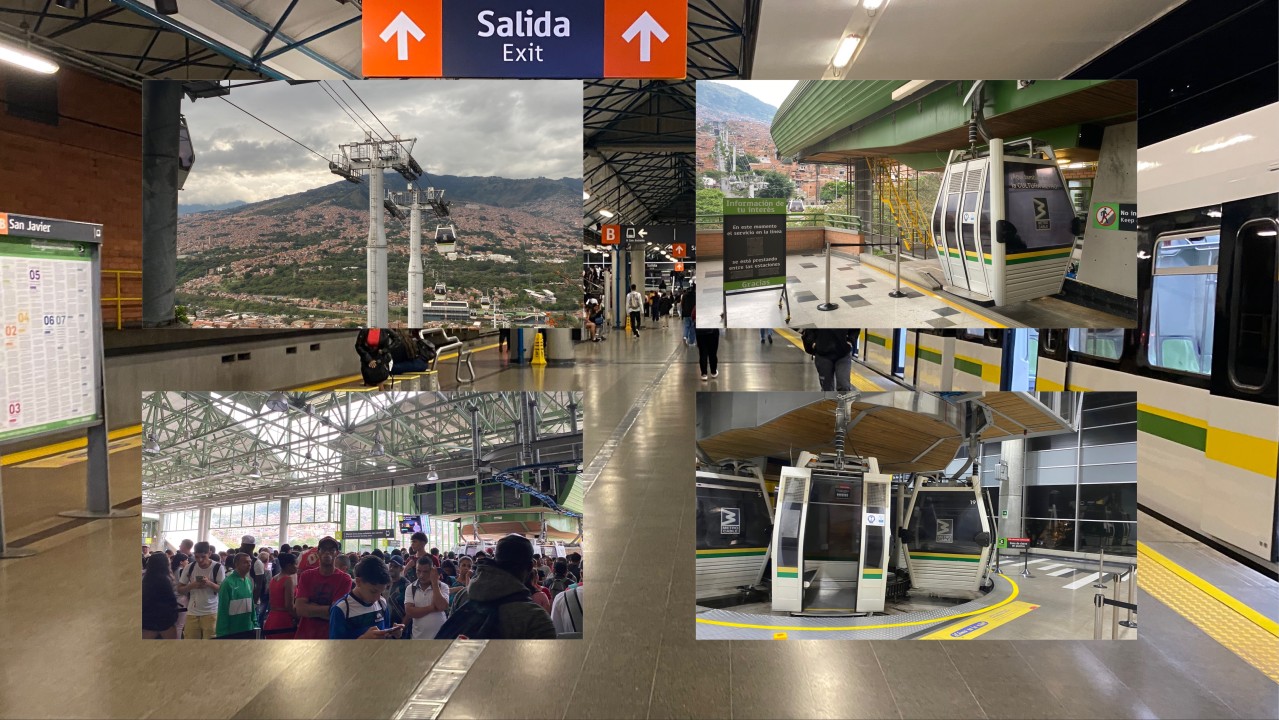
Hey New York, look at Medellin's public transport
Last weekend I tested the public transport in Medellin, Colombia. I tried it all: bus, subway, tramway, and cable cars.
In NYC, everyone, including billionaires and tv anchors like Richard Quest, rides the subway; it's convenient. They would prefer the one in Medellin. A country with a GDP per capita 80% lower than the US has better-running trains and subway stations (see photos).

Metro cable: the poorest neighborhoods in Medellin used to be isolated and at the mercy of drug gangs. The metro cable reduced travel time from 2 hours to 15 minutes. For some reason, the security guard directing passengers to the cabins picked me to go to a cabin with only two young teenage girls. I never initiate conversations in these situations, but that wasn't a problem; they did and shared everything about living in La Aurora. It was late at night, and they discussed how it would take them more than two hours if they missed the last metro cable to get to La Aurora. Like many other riders, they were Venezuelan immigrants. Colombian passengers I met included street vendors and university students who couldn't manage their businesses or attend school without the metro cable. I complimented them for their entrepreneurship and dedication. Education is the surest way out of poverty, I told them.

I tried a similar metro cable in La Paz, Bolivia, a few years ago. La Aurora, the last station in Medellin, is at 1,849 meters, according to the altimeter on my phone. El Alto, in a tough neighborhood in La Paz, was at over 4,000 meters.

Subway (Metro): both the stations and trains are the envy of NYC (see photos). Good signs, some in English. What's missing is free public bathrooms, as found in all stations at the subways of Seoul and Dubai or paid ones in Munich (public restrooms should be free, after Covid, we should have learned we want folks to wash their hands).

Tramway: the futuristic-looking cars are highly recommended for those who want to see the city's outskirts through its panoramic windows for a $0.80 ride.

Salary adjusted fares. These German and Spanish trains, the envy of New Yorkers, are expensive. A maid working in Hudson Yards, New York, where we have the nicest subway station, makes five times more per hour than a maid in Medellin. Someone working in retail at the H&M store in Midtown Manhattan also makes five times more than someone working at Premium Plaza mall in Medellin. When we account for that, using what economists call purchasing power parity, each ride costs five times more, or 4 dollars (the unadjusted cost is $0.80). The subway in Buenos Aires costs $0.15 (unadjusted), and while this is extreme and all extremes are wrong, public transport in Buenos Aires survives because it's subsidized. Singapore subsidizes public transport and imposes a levy on cars. I like that idea -my colleagues working in Singapore who drive to work do not.
Best in class. Medellin's public transportation network is a benchmark. However, there is still work to do. As measured by the Gini index, income inequality is high in Colombia. The Colombian index is worse than that in Congo, Africa. The US Gini index is not good either; it's worse than in Tanzania, Africa. I believe in global free markets and the free movement of capital and talent. However, we need to ensure Medellin residents from La Aurora can one day live in Pobladond those from West Bronx in Hudson Yards. Access to education, health care, and public transport are vital enablers.

Public health: The Hospital General de Medellin would have gotten an "excellent" review if it wasn't that when I asked what happens to the poor, or immigrants who cannot afford the fees, I was told, "they are out of luck." Argentina's public hospitals are free for everyone (including tourists and undocumented immigrants).
In my private time, after work on weekends, I test public transport networks, public hospitals, and public libraries worldwide to promote them. My reviews/photos on Google Maps have over 200 million views. The Medellin public transportation system I tried last weekend was best-in-class. The Economist points out how "no outsider would have dared to set foot in La Aurora, once the most dangerous neighborhood in Medellín," and now "mayors from all over the world are trekking to the city" to see how the Metro cable was done. I was there, and I liked it.
Multilingual Marketing Professional ★ Credit Cards, Banking, CPG, Finance Industries
1yWow! I am visiting Medellin coming May. Thanks for sharing.